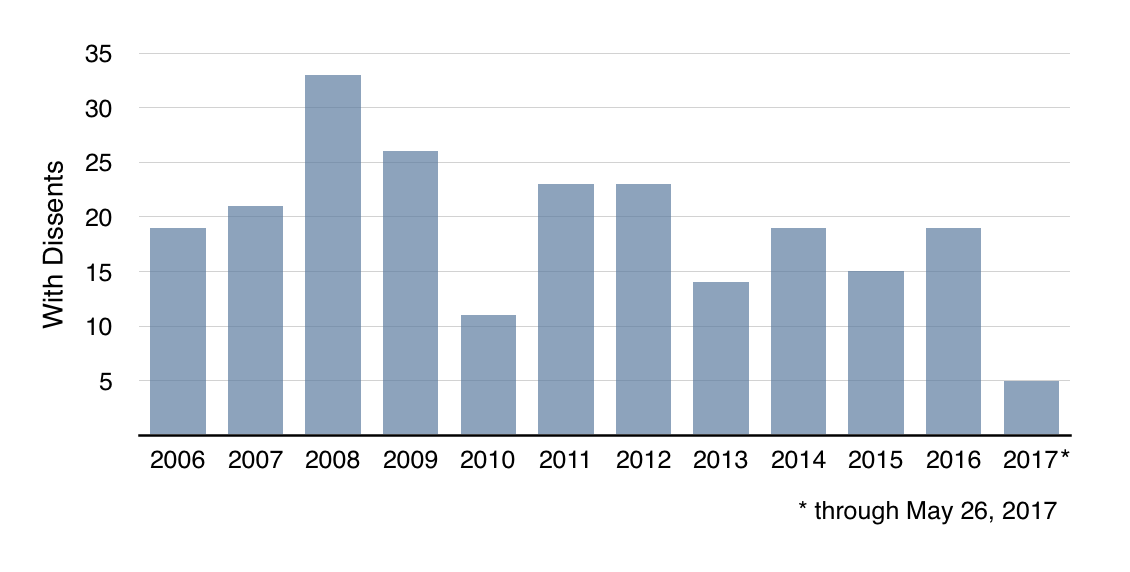I’ve been publishing voting stats about the Texas Supreme Court since 2010, but my first project was a look back at four years in which the court had the same nine members (the 2006 to 2009 terms). Over that span, the court issued about 25 decisions with a dissent each year — and about 9 per year were 5-4 votes.
The 2010 term marked a recent low with only 11 cases receiving any dissent from the judgment. Since then, the totals have been 22, 23, 14, 19, 15, and (last year) 18 decisions with dissents. (You can poke through the details on the Texas Supreme Court voting patterns charts.)
With a month to go, the total for the 2017 term is only 5:

As it happens, dissents saw a similarly slow start last year. Through May 2016, the court had issued only 7 decisions with dissents — before a surge of dissents in June pushed the year-end total to 18.
Should we expect this term to be similar? Or will this be the fewest dissents since at least 2005?
If placing a bet, I would take the “under.”
The short reason why: there are very few “older” argued cases yet to be decided.
For obvious reasons, it takes longer to to produce decisions with dissents than without. Some time is needed for an internal back-and-forth of drafts among the justices. The dissent reacts to what the majority writes, and often the majority makes improvements and adds a section respodning to the dissent. In rare instances, a dissent might even persuade enough other justices to win the day. (If you see a published “dissent” with an unusually detailed fact section and procedural history, that might be a tell.)
Most of the dissents published in June 2016 were from cases that had been argued the previous fall (or even earlier), so the court had plenty of time for its internal deliberations. Only three of last June’s dissents were for cases argued that spring.
In 2017, those older cases are already off the board. Only a single case remains from last fall’s argument calendar (Pagayon v. ExxonMobil, No. 15-0642). Only two remain from this January. The other sixteen cases were argued in the February or March sittings.
Although I wouldn’t bet on a large number of additional dissents, it’s always possible. The cases argued late this spring might prove especially contentious. What’s clear, however, is that if the court does release a significant number of dissents this June, they will have been written in impressively short time.


